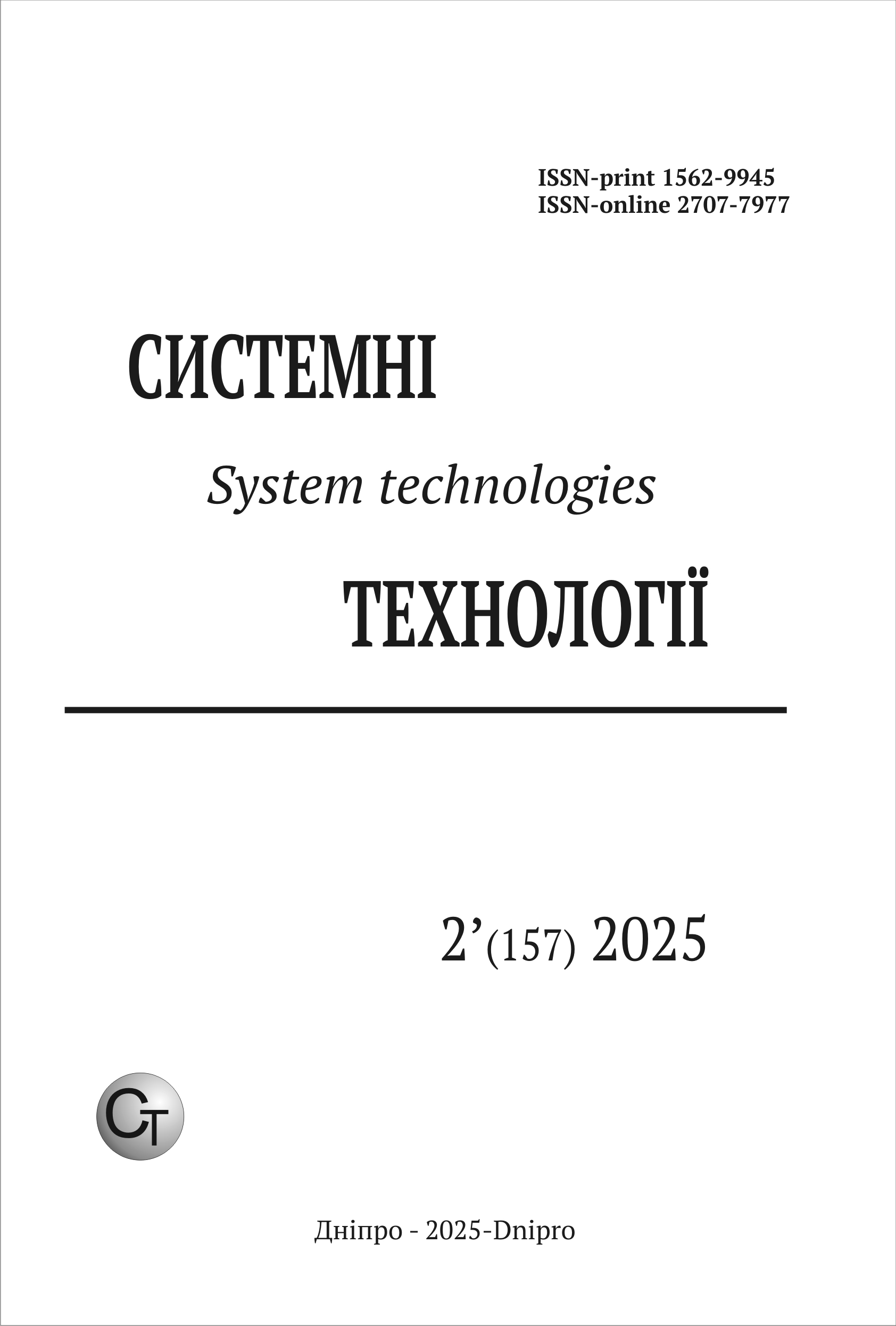USE OF TYPICAL 3D PRIMITIVE BODIES IN AUTOCAD PROGRAM FOR SOLVING POSITIONAL PROBLEMS OF DESCRIPTIVE GEOMETRY
DOI:
https://doi.org/10.34185/1562-9945-2-157-2025-18Keywords:
descriptive geometry, engineering and computer graphics, modeling, primitive bodies, AutoCAD, positional problems.Abstract
Teaching graphic disciplines to students of technical specialties is the foundation of engineering education. Analysis of academic performance in “Descriptive Geometry” and “Engineering Graphics” courses has shown that the main reason for the decline in results in recent years is the lack of basic knowledge obtained in secondary school. In order to improve the effectiveness of teaching and optimize the learning process, it is necessary to introduce new methods that develop spatial thinking and professional skills. Knowledge of geometric primitives and methods of sectioning shapes is the basis for working in AutoCAD. Effective use of these tools allows you to create complex design solutions and greatly simplify the work in design. It should be noted that solving geometric problems is done in parallel on both complex drawings and visualizations using the same principles. This paper shows the use of computer visualization to study sections of three-dimensional bodies (cone, sphere, cylinder) by plane with the help of AutoCAD program. AutoCAD, being a powerful 2D and 3D design tool, provides a wide range of geometric primitives that are the basis for creating complex drawings and models. One of the key aspects of working with these primitives is the ability to create cross sections of shapes, which allows you to visualize the internal structure of objects and analyze their properties. This approach helps to better prepare future engineers to solve practical problems. The simplicity of creating a computer model contributes to the conscious formation of spatial thinking and development of volumetric imagination, as well as to the acquisition of skills in analyzing drawings and geometric constructions. Importantly, AutoCAD also offers the ability to create layered sections, which can greatly enhance teaching and learning in a variety of formats, including lectures, hands-on labs, and distance learning. This software allows instructors to create and share detailed visual representations of concepts, fostering deeper understanding and engagement.
References
Bovnegra L.V., Novikov F.V., Yakimov, O.O., Zhovtobriukh V.O. (2024) Narysna heometriia navch. posib [Descriptive geometry]. Dnipro : Lira [in Ukrainian].
Mykhailenko, V. Ye., Vanin, V. V., & Kovalov, S. M. (2003). Inzhenerna ta kompiuterna hrafika: pidruch. dlia stud. vyshchykh zakl. osvity [Engineering and computer graphics] / Za redaktsiieiu VE Mykhailenka. K.: Karavela. [in Ukrainian].
Meyers, F. (2007). Engineering design graphics: Into the 21st century. The Engineering Design Graphics Journal, 71(3).
Nyemba, W. R. (2022). Computer Aided Design: Engineering Design and Modeling Using AutoCAD. CRC Press..
Fakhritdinovna, S. S. (2021). Efficiency of the Use of Graphic Programs (Autocad, Compass, Coreldraw) In Higher Technical Education. JournalNX, 7(03), 52-55.
AutoCAD. Support and learning. URL: https://www.autodesk.com.
Strelbitskyi V, Bovnegra L. (2025). Advantages of using AutoCAD in teaching engineering and graphic disciplines. Science and Technology Today. № 1(42). 975-983.
Roman, S., & Iryna, S. (2024). FEATURES OF USING COMPUTER GRAPHICS UNDER CONDITIONS OF DISTANCE LEARNING IN VOCATIONAL (VOCATIONAL AND TECHNICAL) EDUCATION INSTITUTIONS. In The 19th International scientific and practical conference “Creative business management and implementation of new ideas”(May 14–17, 2024) Tallinn, Estonia. International Science Group. 2024. 281 p. (p. 145).
Kakhramonovich, M. S. (2024). THE ESSENCE OF GRAPHIC COMPETENCE OF STUDENTS OF TECHNICAL UNIVERSITY IN THE CONDITIONS OF INFORMATIZATION OF EDUCATION. Journal of Advanced Scientific Research (ISSN: 0976-9595), 5(12).
Downloads
Published
Issue
Section
License
Copyright (c) 2025 System technologies

This work is licensed under a Creative Commons Attribution 4.0 International License.















